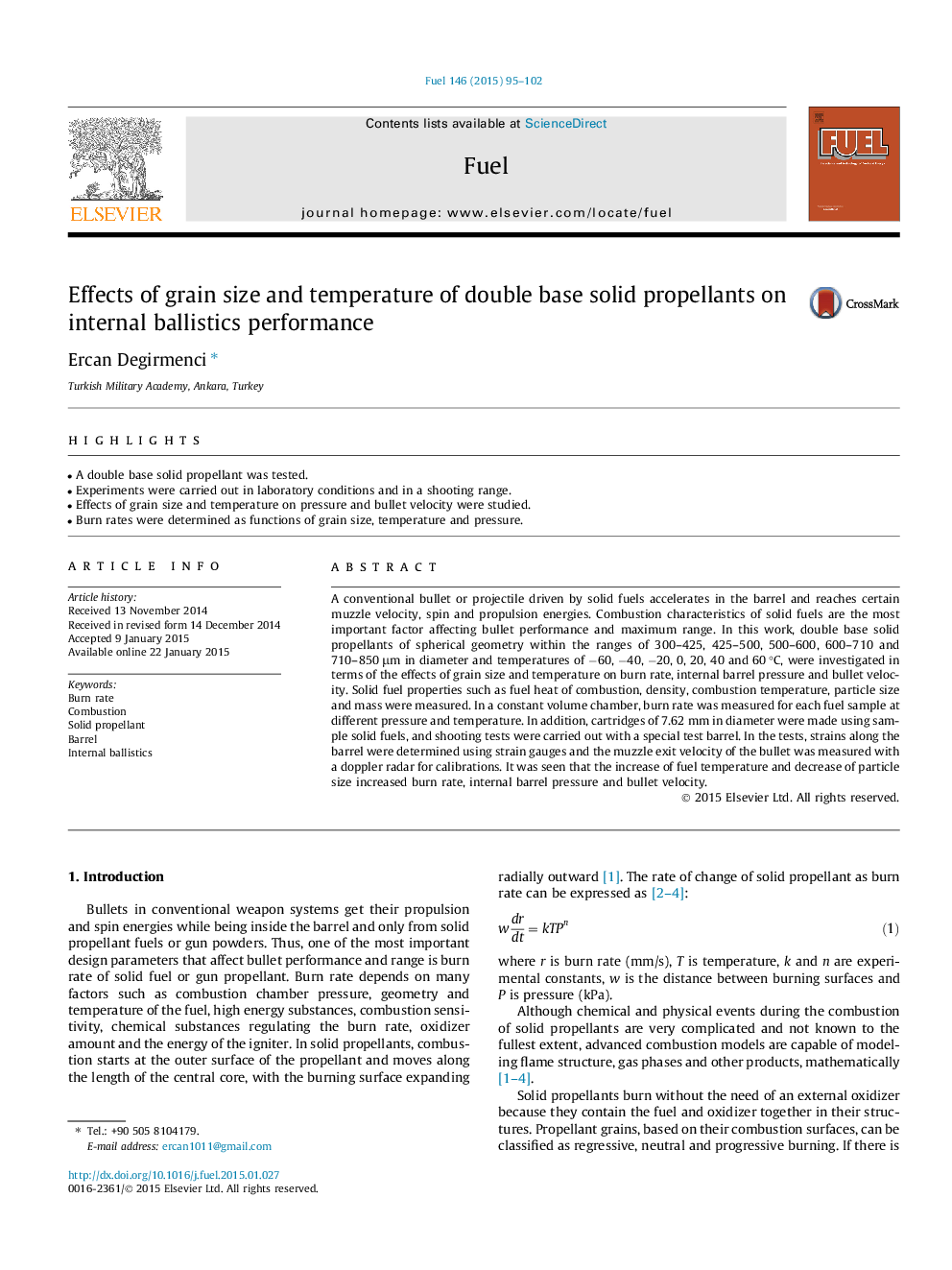| Article ID | Journal | Published Year | Pages | File Type |
|---|---|---|---|---|
| 205983 | Fuel | 2015 | 8 Pages |
•A double base solid propellant was tested.•Experiments were carried out in laboratory conditions and in a shooting range.•Effects of grain size and temperature on pressure and bullet velocity were studied.•Burn rates were determined as functions of grain size, temperature and pressure.
A conventional bullet or projectile driven by solid fuels accelerates in the barrel and reaches certain muzzle velocity, spin and propulsion energies. Combustion characteristics of solid fuels are the most important factor affecting bullet performance and maximum range. In this work, double base solid propellants of spherical geometry within the ranges of 300–425, 425–500, 500–600, 600–710 and 710–850 μm in diameter and temperatures of −60, −40, −20, 0, 20, 40 and 60 °C, were investigated in terms of the effects of grain size and temperature on burn rate, internal barrel pressure and bullet velocity. Solid fuel properties such as fuel heat of combustion, density, combustion temperature, particle size and mass were measured. In a constant volume chamber, burn rate was measured for each fuel sample at different pressure and temperature. In addition, cartridges of 7.62 mm in diameter were made using sample solid fuels, and shooting tests were carried out with a special test barrel. In the tests, strains along the barrel were determined using strain gauges and the muzzle exit velocity of the bullet was measured with a doppler radar for calibrations. It was seen that the increase of fuel temperature and decrease of particle size increased burn rate, internal barrel pressure and bullet velocity.
